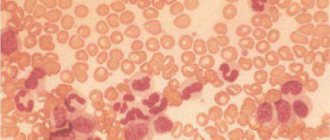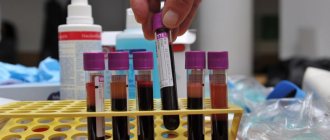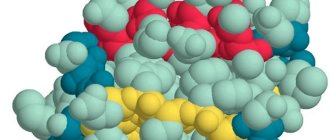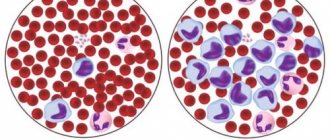Functions
Phosphorus is a chemical component that has properties similar to semimetals. It is able to interact with other substances in the body. Phosphorus can act as an oxidizing agent and as a reducing agent. With its help, the proper functioning of the entire body is ensured, optimal metabolism and balance of all systems and internal processes are maintained.
This component is especially abundant in the brain, muscles, teeth and bones. There is inorganic phosphorus in the blood. If it is not there, then a person cannot move, think, or breathe freely. The functions of the component include:
- formation of healthy teeth and bone tissue;
- full functioning of the heart and kidneys;
- transmission of nerve impulses, which is important for the nervous system;
- participation in growth, cell division, storage and reproduction of genetic information;
- participation in muscle function;
- influence on the accumulation and release of energy from cells;
- release of glucose from products through oxidation in chemical reactions;
- a necessity for strong physical, mental and psycho-emotional activity.
The importance of phosphorus for the body
The macroelement is one of the key participants in biochemical processes that ensure the most important functions of the body. A stable level of phosphates is maintained due to:
- balance of absorption processes in the intestines and excretion in the kidneys;
- intake of the required amount of vitamin D into the body;
- performance of the parathyroid glands and thyroid gland.
In combination with phosphorus, the most important bioactive compounds are formed in the body:
- Phosphoproteins. Participate in the formation of the skeleton.
- Phospholipids. They take part in the construction of cell membranes and protection of cells from damage. They are the body's reserve during nervous and physical overload. Contained in the tissues of the heart, brain, nerve cells and liver.
- Phosphorus esters of monosaccharides. Provides the body with 50% energy.
- Nucleic acids. Responsible for storing and transmitting genetic information.
- Phosphoric acid. Forms phosphatase enzymes that provide regulation of intracellular chemical reactions. Adenosine triphosphoric acid (ATP) and creatine phosphoric acid are sources of energy for biochemical reactions and the functional capacity of muscle fibers.
Norms
Before determining the causes of increased phosphorus in the blood, you should find out about the norm. The indicators of this component change throughout life, this is due to the fact that phosphorus forms internal tissues and organs, especially bone mass and teeth. For this reason, in children it has maximum values, and with age it decreases, and in old age it reaches a minimum.
It should be borne in mind that the component decreases and increases throughout the day. The reason for this is the different intensity of a person’s motor and mental work. The rules are as follows:
- In women - 0.9-1.5 mmol/l (900-1500 mg). During pregnancy and lactation, the figure can reach 3800 mg. After 60 years, the norm is 0.90-1.32 mg.
- In men – 0.81-1.45 (900-1500 mg). After 60 years – 0.75 -1.2 mmol/l.
- In infants and children under 2 years of age – 1.19-2.78 mmol/l. Fluctuations can be from 1200 to 2500 mg. In infancy, the indicators are maximum. In children under 12 years old – 1.45-1.78.
With the indicated indicators of the component, the body will have enough substance to perform important functions. And increased phosphorus in the blood of a child or adult leads to negative health consequences. That is why it is important to control the content of this mineral.
Decreased joint mobility
Up to 85% of phosphorus is found in joints, bones and muscles. When there is a shortage of macronutrients, they are the ones who suffer first. The problem is aggravated by a lack of calcium: in its absence, phosphorus from food is less absorbed.
In severe cases, the joints become swollen and the slightest movement causes pain. Accidental dislocations and fractures with long recovery are possible.
This becomes more noticeable with age, but sometimes very young people, including professional athletes, suffer from joint problems.
High performance
This phenomenon may have various reasons. An increased level of phosphorus in the blood (over 1.45 mmol/l) is called hyperphosphatemia. This means that the component accumulates in various organs, especially in bone tissue, which leads to disruption of the kidneys, heart, and nervous system. Convulsions also occur.
What are the causes of increased phosphorus in the blood? This phenomenon may be due to:
- renal failure, due to which there was an incomplete removal of phosphates from the body;
- hypoparathyroidism;
- anemia;
- development of various tumors;
- destruction of muscle cells or bone healing during fractures;
- osteoporosis;
- excess vitamin D;
- deviation in the functioning of the heart muscle;
- regular contact with this component (gardeners and agricultural workers often use phosphate fertilizers, as well as military personnel who use hazardous chemicals).
So, the main causes of increased phosphorus in the blood include:
- lack of calcium;
- renal dysfunction;
- insufficient bowel function.
This phenomenon occurs in both adults and children. This can be determined by the following symptoms:
- joint pain;
- brittle bones;
- kidney stone disease;
- reduced iron content;
- fatigue and fatigue;
- body aches;
- low levels of leukocytes in the blood.
If these signs occur, you should visit a doctor. The specialist will identify the reasons. Increased inorganic phosphorus in the blood can be due to various factors, but in any case it is necessary to normalize it, which only a doctor can help do.
Why does phosphorus decrease?
A low level of a trace element in a person’s blood is hypophosphatemia. This phenomenon may be a sign of poor nutrition, anorexia, or lack of vitamin D. A low concentration of a microelement in a person’s blood can be caused by a number of diseases and pathological processes, but in most cases this phenomenon is associated with excessive consumption of alcoholic beverages, in addition, it often occurs in people having drug addiction. Other reasons for the decline are as follows:
- rickets;
- severe vomiting or diarrhea, dehydration;
- gout;
- pregnancy;
- malignant tumors;
- hypercalcemia.
In young children who have not yet turned one year old, a decrease in phosphorus can be caused by an incorrectly selected formula for feeding when the body has not yet adapted.
The main symptoms are fatigue, problems with the musculoskeletal system, muscle pain, persistent illnesses of acute respiratory viral infections, acute respiratory infections, and impaired concentration.
In the absence of bad habits and serious illnesses, low phosphorus levels can be caused by poor nutrition, in which a person does not receive the required amount of the microelement from food. In this case, the concentration of phosphorus can be increased to normal levels by changing the diet
But it is important to understand that this can be done in childhood or adulthood. For people 60 years of age and older, nutrition alone will not be enough to raise microelement levels.
How to normalize the amount of phosphorus in the blood?
If the level of phosphorus in the blood is low, its concentration can be raised to normal levels with the help of a proper diet that increases the amount of the microelement. Your daily diet should include whole grains and protein-rich foods. You can increase the phosphorus content by taking dietary supplements.
Dietary supplements have a number of contraindications if taken in excess, so they can be introduced into the diet only after consultation with a doctor. The dose and course of administration depend on the general condition of the patient, the level of phosphorus in the body and the presence of concomitant diseases.
If high or low levels of a microelement are caused by various diseases, it is necessary first of all to treat them along with dietary adjustments. Taking dietary supplements along with medications should be discussed with your doctor, as serious side effects may occur.
Excessive consumption of phosphorus can lead to an imbalance between this trace element and calcium. And this, in turn, is fraught with the occurrence of bone diseases, which is often expressed in damage to dental tissue, bleeding gums and the development of osteoporosis.
Low content
Often, a decrease in phosphate in the blood occurs even with sufficient dietary intake. A reduced content of this mineral is considered dangerous. This phenomenon is associated with:
- metabolic disorders;
- dysfunction of the excretory system;
- various poisonings, including from harmful foods and drinks;
- dysfunction of the parathyroid gland.
Symptoms of P deficiency usually manifest as abnormalities in the muscular and nervous systems. Appears:
- muscle cramps, bone pain;
- changes in skin sensations;
- heart and lung failure;
- anxiety, irritability, apathy;
- loss of appetite.
With a prolonged lack of phosphorus, a dangerous disease appears - hypophosphatemia. Then it is likely that the symptoms will worsen and the following will appear:
- vomiting, diarrhea;
- bleeding gums, softening of bones, their fragility;
- abnormalities in the central nervous system;
- heart failure.
Causes of phosphorus deficiency
Phosphorus in the blood below normal is also a consequence of pathological changes in the body, with the exception of pregnancy, when the phosphorus content decreases for natural reasons. The following reasons can provoke a decrease in phosphorus:
- rickets;
- lack of growth hormone;
- gout;
- periodontal disease;
- hypercalcemia;
- increased production of hormones by the parathyroid glands;
- improper absorption of phosphorus;
- prolonged diarrhea;
- long artificial feeding;
- prolonged vomiting;
- Excess of insulin in the blood during treatment of diabetes mellitus.
A blood test in which phosphorus is determined to be low indicates the need for further examination. A deficiency, like an excess of phosphorus in the blood, is a dangerous condition.
Submission of analysis
Diagnosis can be performed using a simple method, thanks to blood sampling. The analysis allows us to determine the content of inorganic phosphorus. It is measured throughout the day under the influence of certain factors, so to obtain accurate information you need to follow simple tips.
Blood is taken in the morning - from 8 to 11 o'clock, on an empty stomach. Food intake should be limited 8 hours before the tests; you should not have a large dinner before this, and also do not eat heavy, difficult-to-digest foods. You just need to drink plain water.
Blood is taken from a vein, and in small children it is taken from the heel. The test must be performed by a doctor. It is possible to perform a blood test for other indicators to get a clear picture.
Test for phosphorus in the blood: indications and preparation
Kidney pathology - indication for analysis
Analysis is prescribed in the following cases:
- bone diseases;
- pathologies of the parathyroid glands;
- hypo- and hypercalcemia;
- kidney disease;
- violation of acid-base balance.
Preparation rules.
- The day before the study, you should stop taking alcohol and drugs containing R.
- Excessive physical activity is limited during the day.
- The last meal should be completed 8-10 hours before the blood sample is taken.
- Before taking the test, you can drink only clean, still water.
Danger
The causes and consequences of increased phosphorus in the blood are interrelated. A high content of this component leads to complications. If there is no appropriate treatment, this phenomenon can lead to:
- severe liver dysfunction - nausea and bitterness in the mouth;
- anemia with iron deficiency;
- vascular atherosclerosis;
- external and internal bleeding;
- bowel cancer.
With timely examination by a doctor and quality treatment, these consequences can be avoided. The reasons for increased phosphorus in the blood of a child and an adult are the same. The analysis is also performed according to the same rules.
Boosting Phosphorus Levels
Hyperphosphatemia is often caused by renal dysfunction and uremia. The causes of high levels of phosphorus in the blood may be chronic or acute renal failure, pyelonephritis. With hormonal and metabolic disorders - hypoparathyroidism, pseudohypoparathyroidism, diabetic ketoacidosis - the reabsorption of electrolytes from primary urine increases, and the amount of phosphorus in the plasma increases. Other pathologies of the hormonal system that can cause an increase in phosphorus levels in the blood include Addison's disease, acromegaly, and hyperthyroidism. Redistribution of the microelement into the bloodstream occurs in osteoporosis, osteosarcomas, metastatic bone lesions, multiple myeloma, rhabdomyolysis, hemolysis and malignant hyperthermia. An overdose of phosphorus-containing drugs and vitamin D, taking anabolic steroids, beta-blockers, furosemide, hypothiazide, and growth hormone leads to an increase in the amount of phosphorus in the blood.
Normalization
How to restore the component level? In case of severe deviations, it is necessary to take medications prescribed by a doctor based on tests. In general, every person needs to consume foods rich in phosphorus. The mineral is better absorbed from plant foods. They are rich in bran, wheat sprouts, pumpkin and sunflower seeds, nuts, cashews, almonds, and yeast. Phosphorus is found in liver, eggs, cheese, red fish - trout, salmon, pink salmon.
It should be taken into account that a lot of phosphorus is present in sausages, carbonated drinks, and ice cream. If a person constantly eats such foods, there will be an excess of the mineral in large quantities. This is dangerous, so it is important to maintain a healthy and proper diet.
If an increase or decrease in phosphorus is associated with illnesses, then treatment of these diseases is required. Contact with phosphate fertilizers has a negative effect. If the level of this component changes, its use should be stopped.
Treatment
Therapy is determined by the pathology of the organs, in which a change in the concentration of the component in the serum is observed. During an exacerbation, emergency therapy is required, for example, hemodialysis for tumor collapse syndrome.
If endocrine disorders are detected, then hormonal correction is needed. In case of renal failure, the mainstay of treatment is to reduce dietary phosphorus intake. These patients require a low-protein diet and phosphate binders. End-stage kidney disease requires calcium carbonate.
A dialysis patient is prescribed Sevelamer. The drug binds phosphates in the digestive tract, lowering their concentration in the blood serum. Treatment of hyperphosphatemia is carried out under the supervision of a doctor, as self-medication can lead to a worsening of the condition.
In cats
In animals, exceeding the norm of components also leads to various ailments. Increased phosphorus in the blood of a cat - what does this mean? The norm in these animals is 1-2.3 mmol/l, and its increase will be an excess. Increased phosphorus in the blood of a cat leads to chronic renal failure, nephrosclerosis, hydronephrosis, tuberculosis, polycystic disease, and kidney tumors. But a reduced level is also possible, which is a symptom of rickets.
Phosphorus is considered an important element. Its excess or deficiency causes adverse consequences that lead to changes in the functioning of various organs. Often illnesses lead to deviations from the norm, therefore, for various disorders, a comprehensive examination and identification of the root cause is required. In order for the level of the component in the body to be in the required quantity, you should consume more plant foods and eliminate harmful chemically produced foods.
Reduced phosphorus levels
A common cause of hypophosphatemia or a low level of phosphorus in the blood is its increased excretion from the body due to endocrine and renal pathologies: Fanconi syndrome, tubulopathies, hypercortisolism, diabetes mellitus, primary hyperparathyroidism, vitamin D deficiency or cell insensitivity to it.
redistribution of the microelement in the body, in which phosphorus enters the cells and its amount in the blood decreases, occurs during metabolic and respiratory alkalosis, the transition from long-term catabolism to anabolism (after burns, glucose administration). Severe nutritional disorders and malabsorption are less likely to cause a decrease in the level of phosphorus in the blood; as a rule, this occurs during chronic fasting or parenteral nutrition. Among medications, antacids, glucocorticoids, anesthetics, insulin, and estrogens can affect electrolyte levels.











